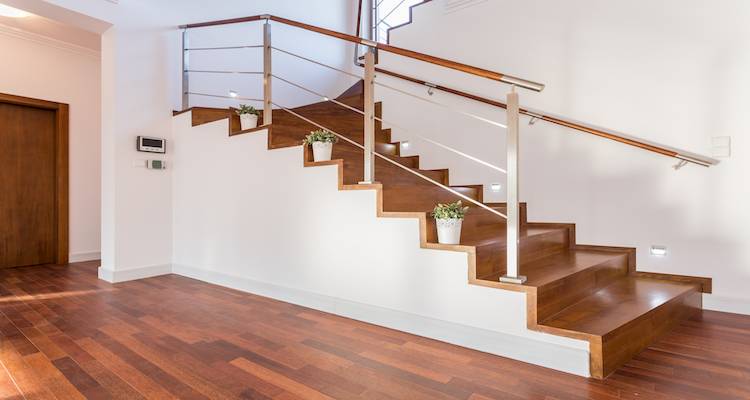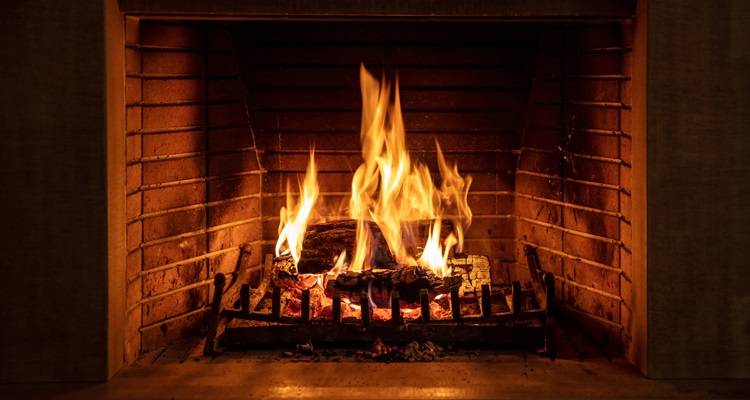Radiator Replacement Cost
- The average radiator replacement cost is around £200 (per radiator).
- Replacing a radiator will usually take a professional about 2 hours.
- NEW! Use our radiator replacement cost calculator to get an easy, no-hassle price estimate for this job.
- How much different sizes and types of new radiators cost in 2025.
- The average labour cost to fit a radiator and how long it typically takes.
- How to find a local radiator fitter with MyJobQuote.
Looking to replace your radiators?
The average cost to replace a radiator in 2025 is around £200 per radiator. This estimate is based on a standard radiator size and includes average fitting costs.
As it only takes between 1 and 2 hours to replace most radiators, the labour cost to fit a radiator will be between £50 and £100. This means that the cost of a new radiator is going to (heavily!) depend on the size and type of radiator that you're looking to replace.
This guide covers everything you need to know about radiator removal and replacement costs. This includes the estimated prices you should expect for different sizes and types of radiators, additional costs you might need to budget for, and a step-by-step guide on how to replace a radiator.
Just want to get a radiator replacement quote?
More than 1 million homeowners across the UK use MyJobQuote to find tradespeople near them every year.
And it couldn't be easier.
All you need to do is submit a few basic details about what you're thinking of doing. We'll then connect you with radiator fitters near you for free, no obligation quotes.
Keep scrolling to find our full guide!

£200
Table of Contents
- How Much To Replace a Radiator?
- Labour Cost to Fit a Radiator
- Additional Radiator Replacement Costs
- How Long Does Replacing a Radiator Take?
- How Much Is a Radiator? (Supply Only)
- Reasons to Remove and Replace a Radiator
- DIY Radiator Replacement & Removal
- Cost of Moving a Radiator
- Radiator Maintenance and Repair
- Checklist: Hiring a Radiator Fitter in the UK
- FAQs
- Sources
How Much To Replace a Radiator?
Radiators are essential to heat your home, but over time, they can stop working and need to be replaced.
Replacing a radiator is a straightforward job for a heating engineer, and most radiator installations can be completed in a few hours.
So, what's the cost of replacing a radiator?
Depending on the size, average replacement radiator costs range from:
- Between £100 and £200 for a small radiator replacement
- Between £200 and £300 for a medium radiator replacement
- £300 or more for a large radiator replacement
The labour cost to fit a radiator varies depending on the project scope.
A simple like-for-like radiator swap will be quicker than removing an old radiator and moving it to an entirely new position - and the cost to move a radiator will always be higher than a simple swap due to the additional pipework.
Choosing between a local or a national radiator replacement company will also impact your installation costs:
- Prices from smaller local tradesmen range from £150 to £200 per radiator
- Larger companies with national coverage charge £175 to £300 per radiator
There's rust appearing at the bottom of our bathroom radiator. Do we need to replace it or can we just treat the rust?
Radiator Replacement Prices
The cost to replace a radiator depends on the size of the radiator.
Let's take a closer look at some average radiator replacement prices you can expect for different-sized radiators.
Cost to Replace Small Radiator
First, we'll look at the price to remove, replace, or install an additional small radiator.
Small radiators are approximately 40cm (height) by 60cm (width).
| Job Type | Duration | Average Cost |
|---|---|---|
| Remove Small Radiator | 1 hour | £80 |
| Replace Small Radiator | 1 hour | £150 |
| Install Additional Small Radiator | 2 – 3 hours | £250 |
Cost to Replace Medium Radiator
This section covers the cost to replace medium radiators, as well as what you should expect to pay for removing a medium radiator or installing an additional one.
Medium radiators are approximately 60cm (height) by 100cm (width).
| Job Type | Duration | Average Cost |
|---|---|---|
| Remove Medium Radiator | 1 – 2 hours | £100 |
| Replace Medium Radiator | 1 – 2 hours | £200 |
| Install Additional Medium Radiator | 3 – 4 hours | £300 |
Cost to Replace Large Radiator
Next, we'll consider large radiator replacement costs, and the average price to remove or add an additional large radiator to your home.
Large radiators are approximately 80cm (height) by 180cm (width).
| Job Type | Duration | Average Cost |
|---|---|---|
| Remove Large Radiator | 2 hours | £120 |
| Replace Large Radiator | 2 hours | £250 |
| Install Additional Large Radiator | 4 – 5 hours | £350 |
Do you want personalised radiator replacement costs?
Use our new radiator cost calculator to get an instant estimate. Simply fill in your details below, and get a quote back that's tailored to your project.
Radiator Replacement Cost Calculator
Labour Cost to Fit a Radiator
Let's find out how much you'll need to pay for a plumber or heating engineer to remove and replace a radiator in the UK.
Like-For-Like Radiator Replacement Cost
For a simple like-for-like radiator installation, you can expect to pay under £300.
With the cost of the radiator included, you will be looking at paying around £200 to £300 in London and the surrounding areas, and around £150 in the north of the UK.
New Radiator Installation Cost
The price for installing an additional radiator in your home will be more expensive than a straight swap, and will depend on how much new pipework is needed and the ease of access.
The cost of fitting an additional radiator will vary depending on who you hire.
- A small business or sole trader will cost between £150 and £200
- A larger national company may charge between £175 and £300
Keep in mind: Adding extra radiators to your property may mean you need to upgrade your boiler if it can't handle the extra demand.
Additional Radiator Replacement Costs
Let's look at some common radiator replacement scenarios and the extra costs they may have:
If You're Adding More Radiators
When replacing a radiator, you should think about your current boiler's capacity and efficiency, and whether it can cope with the extra demand.
You may need to budget for the cost to replace your boiler if:
- Your boiler is over 15 years old and has lost its efficiency
- The boiler has insufficient capacity to heat up the additional radiators
- Your current boiler is incompatible with the new radiators (e.g., smart thermostats or TRVs)
New boiler installations cost in the region of £2,400.
In some cases, you may also need new pipework if your existing pipes are old, corroded, or undersized for your new boiler. Pipework upgrades can cost between £800 and £1,000, depending on how much is needed.
If You Want To Improve Your Heating Control and Efficiency
If you're upgrading your home's radiators, it makes sense to pair them with upgraded heating controls to get the best performance and energy output.

- Thermostatic radiator valves (TRVs) - TRVs allow you to set individual radiator temperatures, resulting in less wasted energy from heating up radiators in rooms you don't use. Fully-fitted TRVs cost between £70 and £140 per radiator, and are required in most modern heating installations.
- Smart thermostats- Installing a smart thermostat costs around £265, and they give you greater control over your home's heating. They can learn your routine and adjust autonomously to reduce your energy wastage, lowering your heating bills.
How much does it cost to have a radiator TRV changed?
If You Want To Clean Your Heating System
Changing your radiators won't automatically fix your heating troubles if your system is full of sludge, debris, and rust from years of use.
- System power flush - A power flush costs £400, and will clear your heating system of build-up, effectively deep-cleaning it, and improving efficiency.
If You Want To Improve Your Home's Thermal Efficiency
You won't feel the benefit of brand new radiators if your home isn't properly insulated, as the heat will escape through windows, doors, and your roof.
- Roof insulation - Modern guidance is that mineral wool loft insulation should be around 270mm thick, and have a U-value of 0.16 W/m²K. Roof insulation costs start at £450, and will depend on your property size, type of insulation, and ease of access.
- Double glazing - If your home doesn't have double glazing, it's wise to get it fitted. The cost to fit double glazing is around £4,500, and can improve your home's energy efficiency, stopping heat loss.
How Long Does Replacing a Radiator Take?
Typically, it won't take more than 2 or 3 hours to replace a single radiator.
If you're replacing all your radiators, you should expect it to take between 1 and 2 days.

However, there are a few things that can cause this job to take longer:
- Access problems - If the radiator you're looking to replace is difficult for someone to reach and work on (e.g., it's in a tight space or behind something).
- Pipework changes - If you're replacing the existing radiator with a different type of radiator, then it may require changes to the current configuration.
- Heating system issues - Older heating systems, or boilers that aren't regularly serviced, may have problems that need attention before anything else can be done.
- Changing the type of radiator - Like-for-like radiator swaps are far quicker than installing a different style of radiator in the same location.
How Much Is a Radiator? (Supply Only)
Thinking about installing a new radiator yourself?
Let's take a closer look at the supply costs of new radiators depending on their style.
Central Heating Radiator Cost
Central heating radiators use corrugated panels to radiate heat throughout a room.
You can get single-panel styles of central heating radiators for small rooms, or double-panel radiators for larger spaces, which produce more heat.
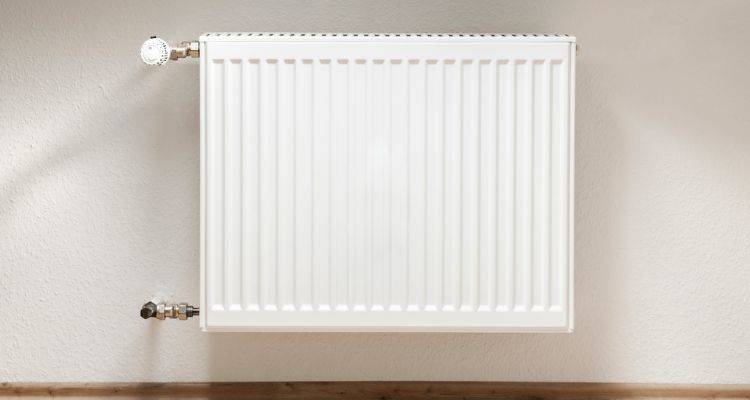
So, what are the benefits of central heating radiators?
- High heat output, even in large rooms
- Great heat efficiency, resulting in lower heating bills
For the costs of central heating radiators, check out this table below:
| Size | Cost |
|---|---|
| Small central heating radiator | £20 – £40 |
| Medium central heating radiator | £40 – £80 |
| Large central heating radiator | £85 – £120 |
Column Radiator Cost
Looking to add or retain a little bit of period charm in your home?
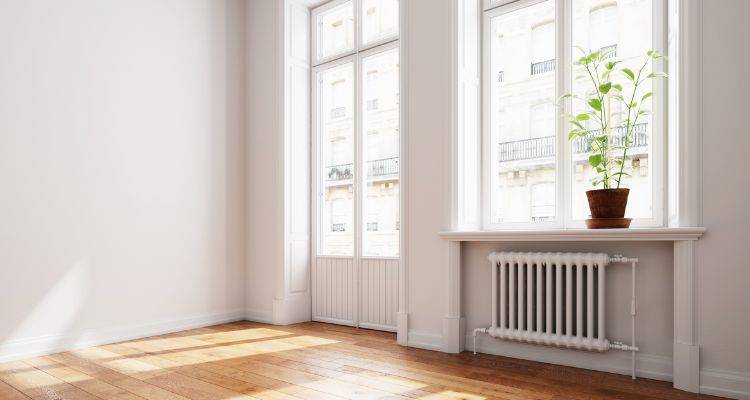
If so, a column radiator might be the perfect option for you. Here's why:
- Traditional aesthetic, with designs originating from the Victorian era
- Modern models offer great heat efficiency
The cost of a column radiator will vary depending on its size:
| Size | Cost |
|---|---|
| Small column radiator | £115 – £190 |
| Medium column radiator | £140 – £230 |
| Large column radiator | £320 – £380 |
Designer Radiator Cost
Radiators can sometimes ruin the aesthetic of your home. So, why not try a stylish and contemporary designer radiator?
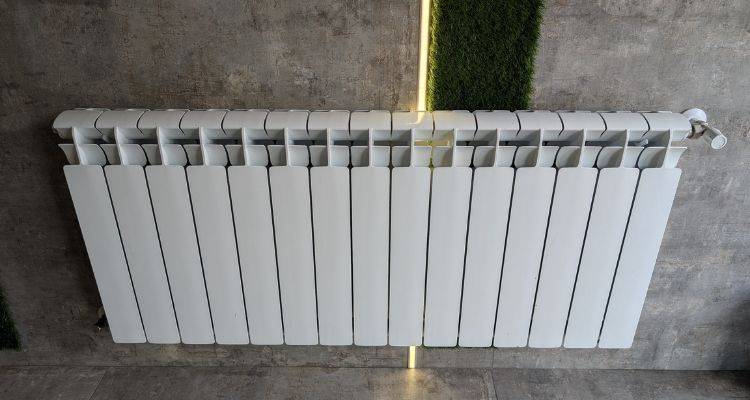
A designer radiator can bring a wide range of benefits to your home, including:
- Space-saving options
- Stylish designs that can double up as mirrors, memo boards, and more
Here are the costs of different-sized designer radiators:
| Size | Cost |
|---|---|
| Small designer radiator | £180 – £300 |
| Medium designer radiator | £200 – £450 |
| Large designer radiator | £350 – £500 |
Vertical Radiator Cost
Do you have limited wall space? If so, you should think about installing vertical radiators.

The advantages of vertical radiators include:
- Able to fit perfectly into small wall spaces, allowing you to heat more of your home
- Available in a wide range of styles and colours
The price of vertical radiators depends on their size:
| Size | Cost |
|---|---|
| Small vertical radiator | £100 – £200 |
| Medium vertical radiator | £150 – £250 |
| Large vertical radiator | £230 – £575 |
Towel Radiator Cost
With a towel radiator, you can dry your towels whilst also adding some extra warmth to your bathroom.

The main benefits of towel radiators include:
- Easy access to towels in the bathroom, keeping them warm and dry
- Space-saving design, ideal for bathrooms with limited space
So, how much does a towel radiator cost? Take a look at the table below:
| Size | Cost |
|---|---|
| Small towel radiator | £25 – £150 |
| Medium towel radiator | £50 – £300 |
| Large towel radiator | £75 – £500 |
Cast Iron Radiator Cost
Cast iron radiators are well-suited to older, period homes.
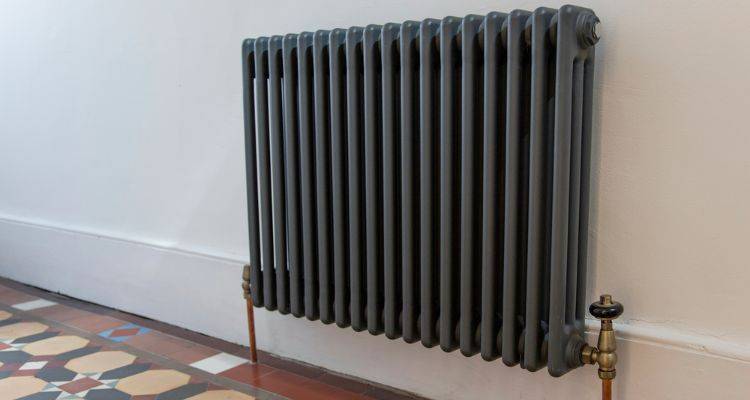
The advantages of cast iron radiators include:
- Cast iron radiators keep warmer for longer after turning your heating off compared to contemporary models
- They can be great options for large rooms with high ceilings
Cast iron radiators are available in various sizes, including:
| Size | Cost |
|---|---|
| Small cast iron radiator | £120 – £200 |
| Medium cast iron radiator | £250 – £595 |
| Large cast iron radiator | £490 – £750 |
Flat Panel Radiator Cost
Are you looking for an easy, relatively fast way of changing your radiators? Then, a flat-panel radiator could be the perfect option for you.
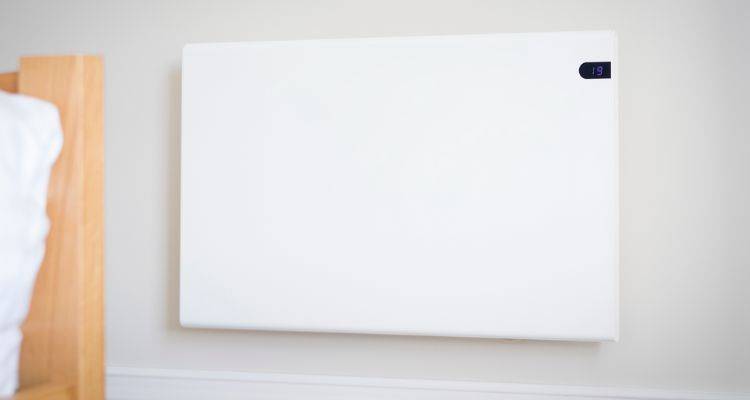
Here's why:
- Flat panel radiators are designed to be light and compact
- They can fit into almost any room without taking up a big amount of space
Flat panel radiators cost range from:
| Size | Cost |
|---|---|
| Small flat panel radiator | £150 – £220 |
| Medium flat panel radiator | £200 – £250 |
| Large flat panel radiator | £250 – £300 |
Stainless Steel Radiator Cost
Stainless steel doesn’t corrode or rust as some other metals do, meaning a stainless steel radiator will be guaranteed to last a long time.

The advantages of stainless steel radiators include:
- High efficiency, heating up quickly and retaining heat well
- Low-maintenance, being naturally resistant to rust and corrosion
Depending on the size, stainless steel radiators cost approximately:
| Size | Cost |
|---|---|
| Small stainless steel radiator | £175 – £275 |
| Medium stainless steel radiator | £250 – £350 |
| Large stainless steel radiator | £350 – £580 |
Mirror Radiator Cost
To create the illusion of more space, you can consider installing a mirrored radiator in your home.
What are the advantages of a mirrored radiator?
- Mirrored radiators give the perception of a bigger space
- They can bounce natural light around the room
Mirror radiators cost around £200 to £650.
Space Saving Radiator Cost
A space-saving radiator is a perfect option if you want to make the most of the space in your room.
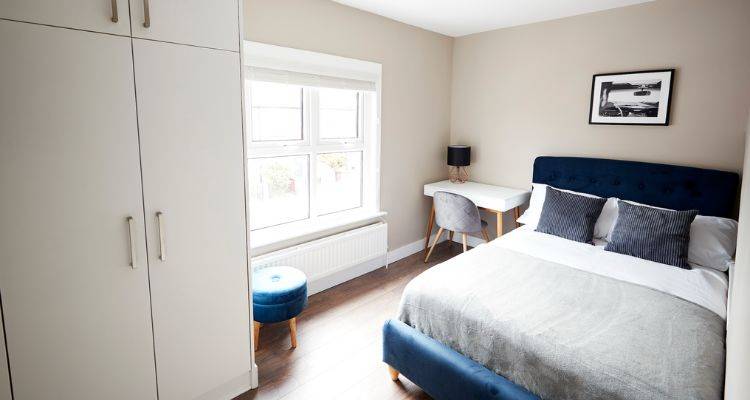
Space-saving radiators are great because:
- They can fit into narrow spaces
- They can wrap around corners, making the most of your available space
Here are the costs of different-sized space-saving radiators:
| Size | Cost |
|---|---|
| Small space saving radiator | £200 – £250 |
| Medium space saving radiator | £250 – £400 |
| Large space saving radiator | £400 – £600 |
Reasons to Remove and Replace a Radiator
- Age and poor efficiency - Radiators tend to decline after 10 to 15 years. If your radiators are getting close to this age range, it’s worth looking at them and evaluating their performance.
- Rust and corrosion – Rust can often occur on the outside of radiators due to their heating and cooling nature. Corrosion can occur within your radiator due to sludge, which can build up over time. Both of these issues can eventually lead to leaks in your radiators.
- Blockages – Blockages can be caused by a clog of sludge or rust. This can prevent the radiator from heating up and working as usual.
Is it safe to temporarily use a rust corroded radiator?
You may not even notice them at first, but given enough time, the rusted area can disintegrate completely and cause a flood."
DIY Radiator Replacement & Removal
It's always recommended to seek professional advice or hire a tradesperson to carry out the job of removing and replacing a radiator if you are unsure of how to do so, or if you aren’t confident in your plumbing skills.
I have painted my kitchen using Dulux kitchen emulsion and need to paint the radiator the same colour. Do I need to buy special radiator paint?
However, if you have previous plumbing experience, you may be able to complete the job successfully - as long as you have the right tools and skills.
Tools and Materials Needed
- New radiator and brackets
- Washing up bowl, cloths, and rags
- Adjustable spanners and radiator bleed key
- Drill and detector
- PTFE (thread seal) tape and wire wool
- Another person to help with heavy lifting
Removing and Replacing Your Radiator
The best way to remove and replace a radiator yourself is to choose a replacement that has identical pipe centres. These are the distances between the two water pipes. This will make the job a lot easier.
If you choose a radiator that is a different shape or size, then you will need to drain the system and make some alterations to the pipework.
- Shut off the valves - The first step you need to take when removing and replacing a radiator is to shut off the valves at either end. If you're adjusting a lockshield valve, be sure to count the number of times you turn the spanner, so you can set your new radiator to the same flow rate.
- Drain the radiator - Place a washing-up bowl underneath the valve, loosen the cap nut, open the bleed valve, and catch the water as it begins to drain.
- Remove the old radiator - With extra help, lift your radiator away from the wall mounting brackets, and then tip it to drain any remaining water out.
- Fit valve connectors - Using wire wool, clean the connectors and then wind your thread seal tape between five and ten times around the threads to ensure that a watertight seal is created. Screw these connectors into your new radiator, and be sure to tighten them completely.
- Hang the new radiator - Mount your new radiator, connect the valves, and reset the lockshield. Once this is complete, allow water to enter the radiator. Open the bleed valve slightly to allow any air to escape. When the water begins to spurt out, close the bleed valve.
- Check for leaks - Check each of the valves for leaks, and then tighten and dry them if needed. Turn your central heating on and keep checking back every now and again for any drips.
Cost of Moving a Radiator
The cost to move a radiator is around £275, and it will usually take between 2 and 5 hours to finish.
It's best to leave moving a radiator to a professional.
This is because there are many things to consider when moving a radiator, such as what is behind the wall and how to move the pipework correctly.
What's the best radiator location in a lounge?
This is due to conduction, with incoming cold air causing more effective heat conduction and pushing the hot air from your radiator into the middle of the room"
Radiator Maintenance and Repair
You need a qualified professional to install your central heating system, but maintaining your radiators isn’t too difficult.
Cold Spots on Your Radiators
If you feel cold spots on your radiators, or notice they're taking a long time to warm up, the first thing you should try to do is bleed your radiators.
This will usually fix any cold spots and help your radiators work more efficiently.
Similarly, rushing sounds in pipes are usually caused by air or bubbles within the system, which can be rectified by bleeding your radiators.
However, if bleeding the radiators doesn’t fix this issue, it's best to call out an engineer to check for a deeper issue.

Humming or Creaking Sounds in Pipes
Creaking pipes can be caused by hot pipes expanding, or by pipes rubbing up against walls, floors, or other pipes.
To fix the issue, try widening the pipe notches in the joists. If you have loose pipes, clip them or pack insulation between the pipes.
Humming sounds can occur in pipes when the pump speed is too high or when your pipes are too narrow for the system flow.
Hissing or Banging Sounds
Hissing or banging sounds can be caused by a faulty boiler, thermostat issues, or a build-up of limescale in the system.
In this case, it's best to call a heating engineer to check your system. They will be able to determine the issue and fix it effectively.
If your central heating system is making noises, it is best to treat the issue earlier rather than later, as leaving it could lead to further issues.
Checklist: Hiring a Radiator Fitter in the UK
Here's what we suggest when the time comes to hire a local plumber to fix any problems you have with your radiator:
- Collect at least 3 quotes from different plumbers near you to compare local prices.
- Ask for an itemised breakdown of costs to see exactly what's included in the fee.
- Clarify if removal costs are included (e.g., removing and disposing of the old radiators).
- Check the plumber's customer reviews to see what other people have said about their service.
- Be sure to ask about any warranties or guarantees on their work.
FAQs
What’s A Corrosion Inhibitor and Do I Need One?
Do I Need Thermostatic Radiator Control Valves On My Radiator?
Where Should I Position My Radiators?
Do Cast Iron Radiators Take Longer To Warm Up Than Standard Radiators?
Why Is My Radiator Hot At The Top And Cold At The Bottom?
Sources
https://www.homebase.co.uk/ideas-advice/plumbing-and-heating/heating/how-to-replace-a-radiator/
https://www.plumbcare.com/blog/2017/10/5-steps-to-take-when-your-radiators-wont-heat-up
https://www.dripfix.co.uk/helpcorrosioninhibitor.aspx





